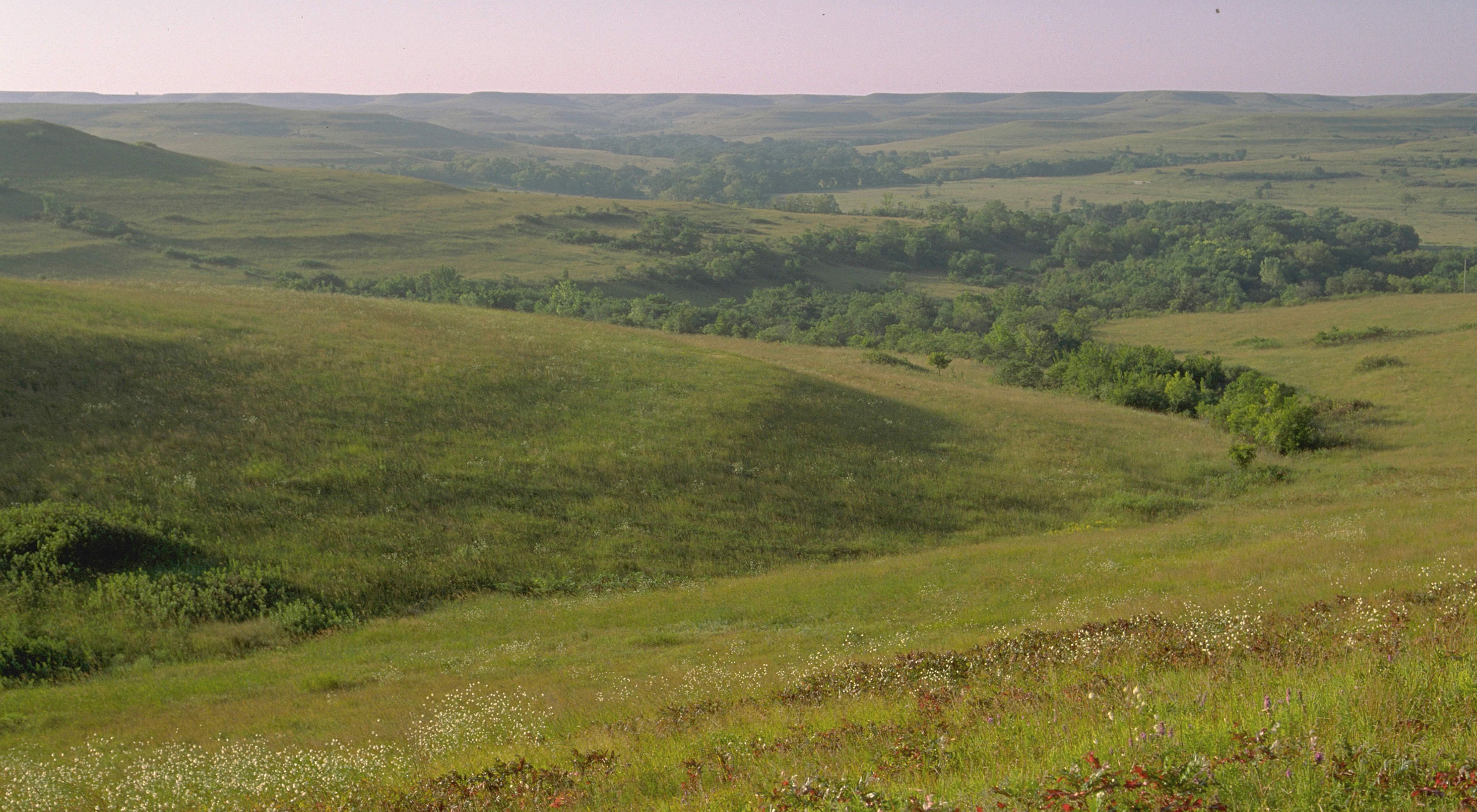Description
Konza Biological Research Station is located in the northern Flint Hills region of Kansas. It is primarily owned by The Nature Conservancy and operated as a field research station by Kansas State University's Division of Biology. The Konza ecosystem contains forest, claypan, shrub and riparian communities in addition to the dominant tallgrass. Konza is dedicated to long-term ecological research, education and prairie conservation.
Why the Flint Hills?
Tallgrass prairie once covered more than 170 million acres, from Canada through Texas and as far as Ohio in the east. Rich prairie soils made the region prime for agricultural development. Most of the tallgrass prairie was converted to cropland within just a couple of decades, making this once expansive landscape North America’s most altered ecosystem in terms of acres lost. Of the roughly 4% that remains today, most (about two-thirds) survives in the Flint Hills of Kansas and Oklahoma.
Alternating layers of chert (flint) found in the limestone gave the Flint Hills region its name. The preserve and surrounding Flint Hills were spared from the plow because it was too rocky. Because the land couldn’t easily be farmed, homesteaders soon found that the region was best suited to cattle ranching. Ranching continues to dominate the local economy and is the primary agricultural use of the Flint Hills.
One of the Most Diverse Ecosystems In the World
Tallgrass prairie is an incredibly diverse ecosystem. The preserve is home to over 500 species of plants. Prominent grasses such as big bluestem, Indian grass, switchgrass, and little bluestem appear to dominate the plant community; however, they are far outnumbered by the diversity of herbaceous plants (wildflowers). Fauna ranges from large grazing animals like deer, bison and cattle to a multitude of insects, amphibians and reptiles and other animal life. Grasslands birds, like greater prairie-chicken (a type of grouse), which has lost much of its native habitat, are of particular interest.
Partnering with Kansas State University
The Nature Conservancy had long wanted a tallgrass prairie preserve in the Flint Hills, but didn't have an office or staff in Kansas. In 1971, Kansas State University professor Lloyd Hulbert worked with TNC and the then-anonymous philanthropist Katherine Ordway to purchase 916 acres at Konza and established the special relationship with K-State to manage the land for TNC. By 1977, another 7,700 acres were added to the preserve and it was named Konza Prairie Biological Research Station.
The long-term ecological research at Konza was first funded by the National Science Foundation in 1980. Since its inception, this program has focused on fire, grazing and climatic variability—the three critical and interactive elements that affect grasslands worldwide. More than 100 scientists from around the world have research projects on-site at Konza.
